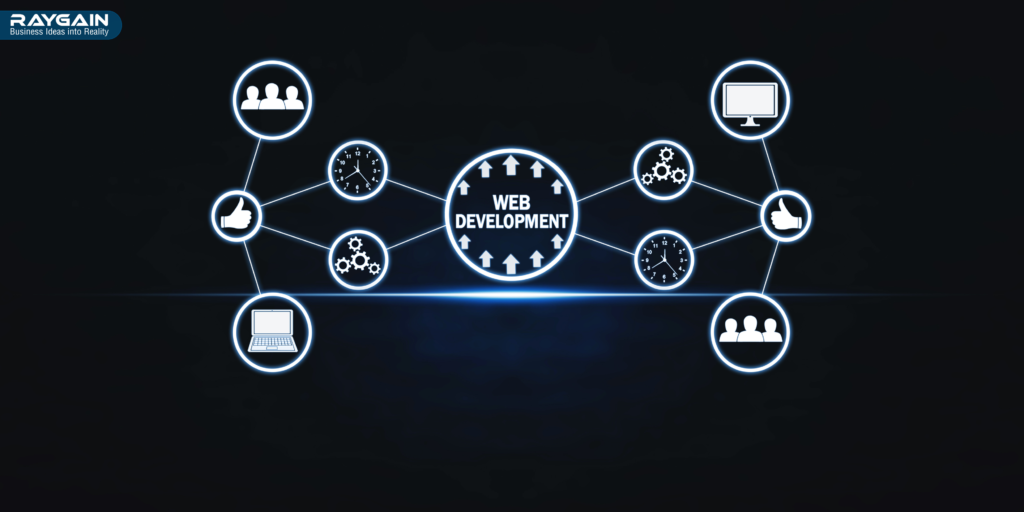Best MVP Development Company in USA to Launch Fast

The Fast Lane to Startup Success Starts with the Right MVP Partner You’ve got the idea. You see the opportunity. But turning your vision into a working product? That’s where startups often get stuck. The truth is—speed is everything. In a competitive startup ecosystem, launching fast can mean the difference between first mover advantage and missed opportunity. That’s where partnering with the best MVP development company in USA makes all the difference. What Is MVP Development — and Why Should You Care? MVP (Minimum Viable Product) development is the smart, lean way to launch new tech products. Instead of building a full-scale application, you focus on creating a working prototype with only the core features needed to validate your idea in the real world. Why startups choose MVPs: But the quality—and speed—of your MVP depends entirely on the partner you choose. Top Challenges Startups Face When Building MVPs Lack of Technical Expertise Startups often don’t have in-house developers, or lack specialists in mobile, web, or backend development. Limited Budget & Resources Every dollar counts. Wasting time or money on rework due to poor planning or execution is not an option. Unclear Product Vision Founders may struggle to define the “must-have” features vs. “nice-to-have.” Slow Development Cycles Delays in delivery can kill momentum and investor interest. Choosing the Wrong Vendor Many teams lack the experience to evaluate software partners effectively. These hurdles are real—but they’re avoidable. What to Look For in an MVP Development Company in USA When choosing an MVP development company in USA, look for these non-negotiables: Speed + Agility Can they build fast without compromising quality? Agile processes, sprints, and MVP-focused workflows are essential. Startup Mindset You need a partner that understands lean thinking, rapid iteration, and market validation—not just code. Technical Breadth From mobile apps to scalable web platforms, ensure the team has cross-domain capabilities. Clear Communication Time zone alignment, frequent updates, and transparent project management tools matter. Scalability Once your MVP gains traction, can they help you scale quickly? Strategic Input A great MVP development partner challenges your assumptions, improves your roadmap, and helps you launch smarter. Why Raygain Technologies is a Top MVP Development Company in USA Raygain Technologies stands out as a go-to MVP development company in USA trusted by startups, scale-ups, and innovation-driven enterprises. What Makes Raygain Different? Whether you’re a solo founder or a venture-backed team, Raygain combines startup speed with enterprise-grade quality. Real Startup Success: From Idea to Launch in 45 Days One of our US-based fintech clients came to us with a raw idea and a tight deadline. Within 45 days, Raygain delivered a secure, feature-rich MVP with user onboarding, live transaction tracking, and admin controls. The product gained early adopters and investor attention within weeks. Ready to Build Smarter & Launch Faster? Choosing the right MVP development company in USA isn’t just about building software—it’s about building momentum. If you’re ready to bring your idea to life, Raygain Technologies is the trusted partner to help you launch fast, smart, and cost-effectively. Book Your Free Consultation
Best Software Development Company USA for Startups

Startups Need More Than Just Code – They Need a Tech Ally In today’s fast-moving digital ecosystem, startups face immense pressure to innovate, launch fast, and scale smarter. Choosing the best software development company USA offers isn’t just about technical skill—it’s about finding a partner who understands startup dynamics like MVP development, budget constraints, and rapid go-to-market timelines. But with hundreds of agencies claiming to be “the best,” how do you know who to trust? Let’s break it down. The Startup Problem: Too Many Choices, Too Little Time Startups often encounter these common challenges when choosing a development partner: Choosing the wrong partner can delay your product launch, drain your budget, and hurt your investor confidence. The Solution: Partnering with the Right Software Company To find the best software development company USA startups can rely on, look for these key qualities: 1. MVP-First Approach Startups need to validate fast. A good software partner should specialize in building Minimum Viable Products (MVPs) quickly and iteratively, helping you get user feedback early. 2. Scalable Architecture You don’t want to rebuild everything once you gain traction. Choose a company that designs solutions to scale seamlessly as your user base grows. 3. Agile & Collaborative Team The best firms work like an extension of your team—using Agile methodologies to deliver in sprints and pivot when needed. 4. UI/UX Expertise Your product must be user-friendly from the start. Prioritize companies that integrate UX/UI design thinking into their development process. 5. Budget-Sensitive Models Startups can’t afford bloated enterprise pricing. Look for partners who offer flexible engagement models like fixed-cost MVPs, milestone-based payments, or dedicated offshore teams. Why Raygain Technologies Is a Startup-Focused Standout When it comes to choosing the best software development company USA startups can depend on, Raygain Technologies consistently earns trust for the right reasons: Whether you’re pre-seed or Series A, we tailor our services to your growth stage and budget. Key Benefits of Choosing the Right Software Partner Choosing the best software development company USA startups trust will empower you to: Final Thoughts: Choose Smart, Launch Strong Your first development partner can make or break your startup’s momentum. Don’t just go with the cheapest—or the flashiest. Choose a company that aligns with your vision, values, and velocity. If you’re ready to build something extraordinary, it’s time to partner with a team that gets startups. Book Your Free Consultation
Benefits of Partnering with a USA-Based Managed IT Services Company

In today’s digital-first landscape, businesses rely heavily on technology to remain competitive, secure, and efficient. But managing IT infrastructure, cybersecurity, and support in-house can be time-consuming and expensive. That’s why more organizations are turning to a managed IT services company for expert solutions—and partnering with one based in the USA offers even greater advantages. Whether you’re a startup, SMB, or enterprise, outsourcing to a USA-based provider like Raygain Technologies can bring you closer to reliable, scalable, and future-ready IT support. Below, we explore the top benefits of working with a USA-based managed IT services company. 1. Proximity and Time Zone Advantage When you work with a USA-based managed IT services company, you’re operating within similar business hours. This leads to quicker communication, faster issue resolution, and seamless project collaboration. Unlike offshore providers, there’s no need to wait overnight for responses or schedule calls at odd hours—your IT partner is in sync with your workflow. 2. Enhanced Data Security and Compliance Cybersecurity threats are growing, and businesses must follow strict data protection laws. USA-based managed IT providers are well-versed in local compliance standards such as: Partnering with a domestic IT company ensures your systems align with federal and state regulations, reducing legal risk and protecting sensitive information. 3. Faster Onsite Support When Needed While most IT issues can be resolved remotely, certain situations demand onsite support—hardware replacements, network installations, or server maintenance. A USA-based managed IT services company can dispatch technicians quickly to your location, reducing downtime and ensuring uninterrupted operations. 4. Better Cultural and Business Alignment Local providers understand the unique challenges, culture, and goals of American businesses. This makes it easier to align IT strategy with business strategy. A domestic IT services partner communicates more effectively, understands regional industry trends, and can customize solutions to suit your company’s size, structure, and market needs. 5. High Standards of Quality and Accountability Companies operating in the U.S. are held to rigorous performance and service standards. When you choose a USA-based managed IT services company, you’re investing in professionalism, accountability, and long-term partnership. They’re more likely to have clear service-level agreements (SLAs), documented escalation procedures, and ongoing support guarantees—all of which build trust and peace of mind. 6. Scalable and Cost-Effective IT Services While it may seem that outsourcing offshore is cheaper, hidden costs and communication barriers can offset initial savings. A USA-based managed IT partner provides transparent pricing, flexible plans, and services that grow with your business. Whether you need 24/7 monitoring, cloud migration, data backup, or end-user support, you can scale your services up or down without the hassle of maintaining a large internal IT team. 7. Access to the Latest Technologies Top-tier managed IT services companies in the USA stay updated with emerging tech trends—from AI-driven automation and zero-trust security frameworks to cloud-native applications and hybrid work solutions. With Raygain Technologies, for instance, you gain access to expert advice, strategic planning, and best-in-class tools that give your business a technological edge in a rapidly evolving market. 8. Business Continuity and Disaster Recovery From cyberattacks to natural disasters, IT disruptions can be costly. A trusted managed IT services company helps you implement robust disaster recovery plans and ensure data resilience. Being USA-based, they can also anticipate local threats (like regional weather events) and prepare customized strategies that minimize downtime and maintain business continuity. Why Choose Raygain Technologies as Your USA-Based Managed IT Services Company? At Raygain Technologies, we understand the unique IT challenges faced by American businesses. Our managed IT services are designed to support your growth, protect your data, and empower your teams with the right tools and technologies. Our Core Managed IT Services Include: Whether you’re a small business or a multi-location enterprise, we offer personalized IT solutions that align with your goals and budget. Final Thoughts In a digital world where uptime, security, and performance matter more than ever, partnering with a USA-based managed IT services company offers unmatched benefits. From regulatory compliance and cultural alignment to faster response times and local expertise, domestic IT providers deliver both peace of mind and business value. If you’re ready to transform your IT infrastructure and drive growth through technology, Raygain Technologies is here to help. Book Your Free Consultation
Looking for the Best Web Development Company? Here’s What to Know

In today’s fast-moving digital world, your website is often the first impression your business makes. That’s why finding the best web development company is crucial to building an online presence that’s not just attractive, but also functional, scalable, and growth-ready. Whether you’re launching a startup, scaling your existing business, or rebranding for a better digital experience, here’s what you should know before hiring a web development partner. Why Your Business Needs the Best Web Development Company Your website isn’t just a digital brochure—it’s your 24/7 salesperson, lead generator, and brand representative. A professional web development company ensures your website: With so many agencies out there, choosing the best web development company can be overwhelming. Let’s simplify the process. Key Traits of the Best Web Development Company Here’s what separates the best from the rest: 1. Proven Expertise Across Technologies The best companies are proficient in a wide range of tech stacks—HTML5, CSS3, JavaScript, React, Angular, Laravel, Python, Node.js, WordPress, Shopify, and more. This ensures your website is built using the right tools for your business model. 2. Custom Solutions, Not Templates A top-tier agency doesn’t rely on cookie-cutter designs. Instead, they create custom web solutions tailored to your unique business needs, goals, and audience. 3. Mobile-First, Responsive Design Over 60% of traffic comes from mobile devices. The best web development company ensures your site is fully responsive, loading flawlessly across smartphones, tablets, and desktops. 4. SEO-Optimized Development A good-looking website means little without visibility. That’s why top companies build sites with clean code, fast load times, and on-page SEO fundamentals. 5. Transparent Process & Clear Communication From planning and wireframing to development and launch, the right partner keeps you involved every step of the way, providing updates and clarity throughout the project. 6. Post-Launch Support & Maintenance Ongoing updates, bug fixes, backups, and scalability options are essential. The best web development companies offer dedicated support even after your site goes live. Questions to Ask Before Hiring a Web Development Company To make an informed decision, ask: A reliable web development partner will answer confidently and showcase past success stories. Why Raygain Technologies Is Among the Best Web Development Companies At Raygain Technologies, we take pride in delivering custom, high-performing websites that drive business outcomes. What makes us stand out? Whether you’re a startup, SME, or large enterprise, we have a solution built for scale, speed, and performance. Industries We Serve We’ve worked with clients across: Our tailored approach ensures your website aligns with your business niche and audience expectations. Final Thoughts: Choose Wisely, Grow Smart Your website is one of your biggest digital assets. Partnering with the best web development company ensures you don’t just have a beautiful design, but a future-proof, conversion-focused, SEO-ready platform. Take the time to research, ask questions, and evaluate based on capability, not just cost. Ready to transform your online presence?
USA’s Journey to Smart Industry Through Industrial Automation

In today’s fast-evolving digital landscape, the United States is rapidly advancing towards smarter, more connected industrial operations. With breakthroughs in robotics, AI, IoT, and 5G, the concept of industrial automation USA has moved beyond theory—it’s reshaping manufacturing floors, logistics hubs, and energy plants across the country. As industries seek enhanced productivity, safety, and data-driven decision-making, automation is no longer an option—it’s a necessity. What is Industrial Automation? Industrial automation refers to the use of control systems—like computers, robots, and information technologies—to handle different processes in manufacturing and other industries. The goal is simple: minimize human intervention while maximizing efficiency, precision, and speed. From automotive to pharmaceuticals, every sector in the USA is leveraging automation to improve product quality, reduce operational costs, and maintain a competitive edge in a global market. Why Industrial Automation is Booming in the USA The rise of industrial automation USA is driven by multiple strategic and economic factors: Key Technologies Powering Industrial Automation in the USA The journey toward the smart industry is powered by cutting-edge technologies that enable real-time control and visibility. Here are some of the core enablers: 1. Industrial Internet of Things (IIoT) Sensors and connected devices allow machines to communicate and collect valuable data across production lines. This data helps improve decision-making and predictive maintenance. 2. Artificial Intelligence & Machine Learning AI algorithms analyze real-time data and optimize processes on the fly. This reduces downtime and increases output with minimal human supervision. 3. Robotic Process Automation (RPA) Robots are handling tasks ranging from assembly to inspection, providing consistency and improving workplace safety. 4. 5G & Real-Time Communication Low-latency networks enable seamless data transmission across devices and systems in large-scale facilities, which is essential for real-time control and worker safety. 5. Cloud & Edge Computing These technologies offer scalable storage, processing, and control capabilities, especially useful for multi-site operations. Benefits of Industrial Automation for USA Industries Companies across the United States are already seeing measurable benefits from automation adoption: Industrial Automation Applications by Sector Here’s how industrial automation USA is applied across major industries: 🔧 Manufacturing Robotic arms, CNC machines, and AI-based inspection tools are redefining smart manufacturing in the USA. Automated production lines now adapt to real-time demand and ensure zero-defect output. ⚗️ Pharmaceuticals From drug formulation to packaging, automation ensures precision, hygiene, and compliance with FDA regulations. ⚡ Energy & Utilities Automation supports grid stability, predictive maintenance, and safety in power plants and utility facilities. 🚚 Logistics & Warehousing Automated guided vehicles (AGVs), RFID tracking, and smart inventory systems streamline warehouse operations and enhance supply chain visibility. 🛠️ Automotive The U.S. automotive sector has been one of the earliest adopters of robotics. Today, AI and machine vision are enabling smarter assembly lines and predictive quality control. Raygain Technologies: Empowering USA’s Automation Journey At Raygain Technologies, we specialize in delivering advanced automation solutions tailored for industries across the USA. From industrial IoT to connected worker platforms and 5G-powered systems, we help businesses take the leap toward Industry 4.0. Our industrial automation offerings include: With a strong focus on safety, scalability, and operational excellence, we ensure your automation investments deliver long-term value. 📩 Get in touch today to explore customized automation solutions for your facility: 🌐 www.raygain.com 📧 info@raygain.com 📞 +91-11-40452150 Final Thoughts The USA’s shift toward a smart industrial future is unstoppable, and automation is leading the charge. Whether you’re running a small plant or a large enterprise, embracing industrial automation USA is the key to staying resilient and competitive in the modern economy. Partner with Raygain Technologies to build smarter, safer, and more efficient industrial systems tailored for the future.
New BLE-Based Connected Worker Solution from Raygain Improves Industrial Workplace Safety

In today’s complex industrial environments, ensuring worker safety and operational efficiency is a top priority. Raygain Technologies has introduced a powerful connected worker solution—a BLE-based Worker Tracking Application designed to enhance zone safety and workforce visibility in large-scale plants and industrial facilities. Built with Bluetooth Low Energy (BLE) technology, this innovative system provides real-time worker tracking, intelligent geofencing, and smart zone management to help companies maintain high safety standards while optimizing operations. Why Industrial Facilities Need a Connected Worker Solution Industrial operations often span across hazardous zones, moving equipment, and remote work areas. Relying on outdated safety protocols and manual monitoring is no longer sufficient. A connected worker solution offers real-time data, instant alerts, and centralized visibility—key components for preventing incidents and improving compliance. Raygain’s BLE-powered application helps organizations take a proactive approach to worker safety, creating a safer and more connected industrial environment. Key Features of Raygain’s BLE Worker Tracking Application 🔍 Real-Time Worker Location Tracking Using BLE Beacons and Anchors, the system continuously tracks the location of workers across the facility, ensuring real-time visibility and improved response during emergencies or safety breaches. 🗺️ Geographical Framing Zones The solution defines and manages multiple types of safety zones: BLE devices trigger automatic alerts when workers enter or leave these zones, helping supervisors monitor compliance and reduce safety violations. 📡 Easy-BLE V1.1 Beacon A low-energy Bluetooth beacon that supports iBeacon, Eddystone, and Classic Bluetooth standards. It’s compact, efficient, and ideal for tracking workers, assets, and mobile machinery in complex industrial layouts. 📶 BLE Scanner / BLE Anchor The BLE Scanner monitors beacon signals, capturing real-time data such as beacon ID, RSSI, and proximity. It ensures continuous tracking and provides reliable communication between workers and supervisors. ✅ Safety Compliance and Risk Reduction With automated tracking and alerts, the application minimizes the chances of unauthorized access, PPE non-compliance, and time-consuming manual checks—making it a valuable tool for ensuring OSHA and industry-standard safety compliance. Supporting the Connected Worker Ecosystem Raygain’s solution goes beyond basic tracking. It enables an integrated safety and operations ecosystem by connecting workers, devices, and supervisors through a smart BLE network. Benefits include: Ideal Applications Across Industries Raygain’s connected worker solution is a perfect fit for industries such as: Whether it’s a 5 km² plant or a multi-zone worksite, this solution adapts to varying environments and challenges. Why Raygain Technologies? Raygain Technologies is a trusted name in delivering smart industrial automation solutions. With a focus on innovation, reliability, and scalability, Raygain’s team develops solutions that address real-world challenges in safety and operational intelligence. The BLE Worker Tracking Application is yet another example of Raygain’s commitment to creating safer, smarter, and more connected industrial workplaces. Ready to Upgrade Your Industrial Safety? If you’re looking to adopt a powerful connected worker solution that enhances safety, boosts productivity, and ensures compliance, Raygain Technologies has the expertise and tools to support your transformation.
How Can a Cyber Security Company in USA Protect Your Business from Evolving Threats?

In today’s digital-first world, cyber threats are growing smarter, faster, and more damaging. From ransomware and phishing to zero-day exploits and AI-driven attacks, businesses across every industry are vulnerable. Protecting your infrastructure, data, and reputation is no longer optional—it’s essential. That’s where a trusted cyber security company in USA like Raygain Technologies steps in. In this blog, we explore how partnering with a cyber security expert can help your business stay ahead of evolving cyber threats. 🔐 The Changing Face of Cyber Threats Cyber attacks aren’t just more frequent—they’re more sophisticated. Modern threats are: To stay protected, businesses must go beyond basic firewalls and antivirus. They need intelligent, proactive, and adaptive defense systems. 🛡️ What a Cyber Security Company in USA Offers A professional cyber security company in USA provides end-to-end services that address not just current risks, but future vulnerabilities as well. Here’s how: 1. Real-Time Threat Monitoring and Response Cyber threats don’t sleep—and neither should your security. Raygain’s SOC (Security Operations Center) monitors your systems 24/7 for suspicious activity. ✅ Intrusion Detection Systems (IDS) ✅ Real-time alerts and threat response ✅ Continuous vulnerability scanning Benefit: Detect and neutralize threats before they cause damage. 2. Advanced Endpoint Security Whether it’s laptops, smartphones, or IoT devices—endpoints are common entry points for attackers. A cyber security company in USA deploys enterprise-grade endpoint protection solutions, including: ✅ AI-powered antivirus and anti-malware ✅ Endpoint Detection & Response (EDR) ✅ Device compliance enforcement Benefit: Prevent breaches caused by employee devices and remote access. 3. Data Encryption & Secure Access Controls Data is your most valuable asset—and a major target. Raygain implements: ✅ End-to-end encryption ✅ Role-based access control ✅ Multi-factor authentication (MFA) ✅ Secure VPNs for remote workers Benefit: Keep sensitive data protected and accessible only to authorized users. 4. Risk Assessment & Compliance Audits Regulatory compliance is critical, especially for industries like healthcare, finance, and manufacturing. Raygain helps you meet standards like: ✅ GDPR ✅ HIPAA ✅ ISO 27001 ✅ NIST We conduct thorough risk assessments to identify and patch security gaps before auditors or attackers find them. 5. Incident Response & Recovery Planning In the event of a breach, every second counts. A cyber security company in USA offers: ✅ Predefined incident response protocols ✅ Forensic analysis ✅ Business continuity & disaster recovery planning ✅ Secure data backups Benefit: Minimize downtime, recover faster, and reduce long-term impact. 6. Security Awareness Training Humans are the weakest link in most security strategies. Raygain offers employee training to prevent: ✅ Phishing attacks ✅ Credential theft ✅ Social engineering Benefit: Empower your team to recognize and avoid threats before they escalate. 7. Custom Security Architecture Every business is different. A cyber security company like Raygain doesn’t offer one-size-fits-all solutions. Instead, we: ✅ Analyze your industry, infrastructure, and risk profile ✅ Design layered security systems ✅ Align strategies with your business goals Benefit: Tailored protection that evolves as your business grows. 🌐 Why Choose a Cyber Security Company in USA? Partnering with a local, US-based cybersecurity provider like Raygain Technologies offers specific advantages: 🇺🇸 Compliance with US data protection laws 🕒 Faster response times and onshore support 🤝 Proven experience with American enterprises 🔒 Alignment with industry-specific regulations 🚀 Raygain Technologies: Your Cyber Security Partner At Raygain Technologies, we understand that cyber security is not just an IT issue—it’s a business-critical function. We provide end-to-end protection designed to meet your current needs and scale with your growth. Whether you’re a startup, SMB, or large enterprise, our team is ready to: ✅ Assess your risks ✅ Deploy modern defense tools ✅ Monitor your environment 24/7 ✅ Respond swiftly to threats ✅ Train your team to stay alert Final Thoughts Cyber attacks aren’t slowing down. The only way forward is preparedness. A proactive, experienced cyber security company in USA like Raygain helps you protect what matters most—your systems, data, customers, and reputation.
Digital Transformation Company in USA for Scalable, Secure IT Solutions

In today’s fast-evolving digital landscape, businesses must continuously adapt to stay competitive. Digital transformation is no longer a luxury—it’s a necessity. From cloud adoption to intelligent automation, companies are investing in next-gen technologies to improve efficiency, security, and scalability. This is where a digital transformation company in USA, like Raygain Technologies, plays a critical role. Whether you’re a startup or an enterprise, choosing the right partner ensures your digital journey is successful, secure, and aligned with your goals. What Is Digital Transformation? Digital transformation refers to the integration of digital technology into all areas of a business. It reshapes how organizations operate and deliver value to customers by leveraging technologies such as: A digital transformation company in USA helps implement these technologies strategically to drive innovation, streamline operations, and reduce costs. Why Your Business Needs a Digital Transformation Partner 1. Accelerate Growth with Scalable Solutions As your business grows, so do your technology needs. A digital transformation company in USA delivers scalable IT infrastructure, ensuring your systems expand with your operations without performance compromise. 2. Strengthen Cybersecurity Cyber threats are growing in sophistication. An expert partner offers secure IT solutions, including advanced firewalls, secure cloud migration, VPNs, and data protection strategies, crucial for compliance and trust. 3. Boost Operational Efficiency By automating workflows, digitizing records, and integrating systems, businesses save time and reduce errors. A digital transformation partner identifies inefficiencies and recommends tech-driven solutions that deliver measurable ROI. 4. Enhance Customer Experience Digital transformation is not just internal. It’s about delivering a seamless and responsive experience to customers. From custom web portals to mobile apps, companies like Raygain craft solutions that enhance engagement and satisfaction. 5. Ensure Business Continuity With cloud-based infrastructure, real-time backups, and disaster recovery strategies, you reduce downtime risks and maintain uninterrupted services—an essential advantage in a digital-first world. Key Services Offered by a Digital Transformation Company in USA At Raygain Technologies, we offer a full suite of services tailored to your digital goals: ✔ Cloud Services We migrate, manage, and optimize your cloud infrastructure to enhance agility, reduce costs, and improve performance. ✔ Custom Software Development From enterprise platforms to mobile apps, we build scalable software that meets your unique business needs. ✔ IoT & Smart Solutions We connect your physical operations with digital intelligence using IoT-enabled devices, sensors, and smart analytics. ✔ AI & Machine Learning Integration Our AI solutions improve decision-making, automate processes, and personalize user experiences across platforms. ✔ Cybersecurity Protecting your digital assets is our priority. We provide 360° protection, including threat detection, firewalls, secure access controls, and compliance assurance. ✔ Digital Consulting We assess your current digital maturity, identify gaps, and design a transformation roadmap that aligns with your vision. Why Choose Raygain Technologies? If you’re searching for a digital transformation company in USA, Raygain Technologies stands out with: We don’t just implement technology—we align it with your strategy to fuel sustainable growth. Real-World Applications Here are a few ways businesses across the USA are leveraging our digital transformation services: Future-Proof Your Business Digital transformation is not a one-time project—it’s an ongoing journey. The right digital transformation company in USA helps you adapt to market changes, embrace emerging technologies, and stay competitive in an ever-evolving digital economy. Whether you need cloud migration, enterprise software, or secure IT infrastructure, Raygain Technologies offers end-to-end digital solutions designed for growth and resilience. Final Thoughts In an age where digital-first is the norm, working with a reliable digital transformation company in USA, like Raygain Technologies, ensures your business thrives. From strategy to implementation, we provide secure, scalable, and intelligent solutions that future-proof your organization. Book your free consultation and start your transformation journey today. 👉 Contact us to get started.
Why Every Enterprise Needs a Private 5G Network Company Today

In today’s hyper-connected world, enterprises demand faster, more secure, and more reliable communication networks. The growing need for high-speed, low-latency data transmission has made private 5G networks a strategic asset. Unlike public 5G, which serves broad audiences, a private 5G network offers dedicated connectivity tailored to an organization’s specific needs. This is where partnering with a private 5G network company becomes essential. What Is a Private 5G Network? A private 5G network is a standalone wireless infrastructure that provides exclusive access to 5G connectivity within a defined area such as a factory, warehouse, campus, or smart city. It is not shared with general public traffic and can be fully customized, offering enterprises total control over their network resources. Why Enterprises Are Adopting Private 5G 1. Enhanced Network Security With increasing cybersecurity threats, enterprises need secure communication systems. A private 5G network company provides end-to-end encryption and secure access protocols, ensuring that sensitive enterprise data stays protected. 2. High Speed and Low Latency Traditional Wi-Fi and public networks often suffer from interference and congestion. Private 5G networks offer ultra-low latency and lightning-fast speeds, which are crucial for real-time applications like remote operations, robotics, and AI-powered analytics. 3. Greater Control and Customization Enterprises can configure their private 5G networks based on specific requirements—coverage area, number of devices, bandwidth, and quality of service (QoS). A trusted private 5G network company enables full control over performance and traffic management. 4. Scalability and Flexibility Whether you’re operating a single site or managing multiple facilities, private 5G networks can scale seamlessly. Businesses can add new users, devices, or sites without compromising performance. 5. Supports Industry 4.0 Applications A private 5G network company empowers smart manufacturing, connected workers, autonomous vehicles, and IoT applications. The ability to connect thousands of sensors and devices simultaneously drives digital transformation across sectors. Key Benefits of Partnering with a Private 5G Network Company Choosing the right partner is crucial to building a reliable and future-ready network. Here’s how a professional private 5G network company like Raygain Technologies can transform your enterprise: 1. Customized Network Design Raygain tailors every solution based on your environment—be it industrial, corporate, or remote. We conduct a complete site assessment, analyze performance requirements, and deliver a private 5G network built for your business goals. 2. End-to-End Deployment & Support From spectrum acquisition to hardware installation and software configuration, Raygain handles every aspect. We ensure seamless integration with your existing IT infrastructure, reducing downtime and improving operational efficiency. 3. Compliance and Security We prioritize network compliance and robust security standards to meet industry regulations. Our 5G solutions are designed to ensure enterprise-grade protection against cyber threats. 4. Advanced Monitoring & Management Our platforms offer real-time monitoring, analytics, and remote troubleshooting. You gain full visibility into network performance and device activity, enabling proactive issue resolution. 5. Future-Ready Infrastructure As technologies evolve, so do our networks. Raygain builds scalable and adaptive systems, allowing for seamless upgrades as your connectivity needs grow. Real-World Use Cases Why Choose Raygain Technologies? At Raygain Technologies, we specialize in building secure, scalable, and high-performance private 5G networks tailored to enterprise needs. With deep expertise in wireless communication, IoT, and smart infrastructure, we are the trusted private 5G network company for businesses aiming to lead in the digital era. Whether you’re planning to deploy a private 5G network for your smart factory, corporate campus, or utility operation, our team ensures a smooth and cost-effective transformation. Final Thoughts As digital transformation accelerates, enterprises can no longer rely on traditional networks. From enhancing operational efficiency to securing mission-critical data, a private 5G network company can unlock game-changing capabilities for your organization. Investing in private 5G today means staying competitive, connected, and future-ready. Partner with Raygain Technologies to deploy a tailor-made 5G solution that meets your evolving business needs. Book Your Free Consultation
Why Tech-Driven Companies Are Investing in Dedicated Offshore Development Centers

As the digital economy continues to evolve, tech-driven companies are under growing pressure to innovate faster, scale efficiently, and maintain high-quality software delivery. In response to these challenges, an increasing number of organizations are turning to the dedicated offshore development center (ODC) model as a strategic solution. A dedicated offshore development center allows companies to build long-term, scalable teams in cost-effective locations without compromising on quality or control. It’s more than just outsourcing—it’s about creating a global development ecosystem that supports continuous growth, agility, and innovation. In this blog, we explore the reasons why forward-thinking tech companies are investing in ODCs and how Raygain Technologies enables this transformation. What Is a Dedicated Offshore Development Center? A dedicated offshore development center is a remote team of software professionals—developers, testers, UI/UX designers, DevOps engineers, and project managers—hired full-time to work exclusively for a single client. These teams are typically based in countries with a strong talent pool and lower operational costs, such as India or Eastern Europe. Unlike traditional outsourcing, where work is often handled on a project-by-project basis, an ODC functions as an extension of the client’s internal team. This provides better continuity, knowledge retention, and alignment with long-term business goals. Why Tech-Driven Companies Are Embracing the ODC Model 1. Faster Time-to-Market Speed is crucial in the tech world. Whether it’s launching a new product, releasing a software update, or integrating emerging technologies, time-to-market can define success. A dedicated offshore development center enables 24/7 development by leveraging teams in different time zones. With round-the-clock productivity and agile processes, tech companies can shorten development cycles and respond faster to market demands. At Raygain Technologies, we ensure rapid delivery through agile sprint planning, continuous integration, and real-time collaboration tools. 2. Access to Specialized Talent Tech companies often require expertise in niche areas such as AI, blockchain, cloud-native applications, cybersecurity, or IoT. Recruiting such talent locally can be difficult and expensive. With a dedicated offshore development center, companies can access a global pool of highly skilled professionals trained in cutting-edge technologies. Raygain helps clients build dedicated teams with the exact tech stack and domain expertise needed to meet their project goals. 3. Cost-Effective Scaling Hiring, onboarding, and maintaining a full in-house development team in high-cost countries can strain resources—especially for startups and mid-sized companies. By setting up a dedicated offshore development center, companies can significantly reduce development costs while maintaining high-quality standards. The cost advantages of offshore operations include lower salaries, reduced overhead, and minimal infrastructure investment. Raygain provides transparent pricing models that allow clients to scale efficiently without hidden costs. 4. Long-Term Development and Product Stability Tech products are rarely one-off projects. They require continuous enhancement, support, and iteration. An ODC ensures long-term product stability by retaining the same team over time. This continuity leads to better code quality, deeper product understanding, and lower onboarding time for new team members. Raygain’s dedicated teams are integrated deeply into the client’s development lifecycle, ensuring consistent delivery and minimal disruption. 5. Increased Focus on Core Business Managing software development internally can divert attention from core strategic activities such as sales, marketing, and customer engagement. With an ODC handling development, tech leaders can focus on growth, innovation, and customer success. Raygain takes care of hiring, team management, infrastructure, and compliance—so clients can stay focused on driving business value. 6. Data Security and Compliance For tech companies, protecting user data and intellectual property is a top priority. A trusted offshore development partner ensures enterprise-grade security, secure communication channels, and strict adherence to data compliance standards like GDPR, HIPAA, or ISO 27001. At Raygain Technologies, we implement secure access protocols, sign NDAs, and provide a secure development environment for all offshore teams. Key Use Cases: How Tech Companies Use ODCs Tech-driven businesses are leveraging ODCs for a variety of needs, including: Why Raygain Technologies? At Raygain Technologies, we specialize in setting up and managing dedicated offshore development centers tailored to your technical and business goals. With years of experience supporting global clients, we offer: Whether building your first offshore team or expanding your global development footprint, Raygain ensures you succeed with a scalable, cost-effective, and fully managed ODC solution. Final Thoughts For tech-driven companies aiming to stay competitive, agile, and future-ready, a dedicated offshore development center offers a strategic path forward. It empowers organizations to innovate rapidly, scale seamlessly, and optimize resources without compromising on quality. As the global demand for technology talent continues to grow, investing in an ODC is no longer just an option—it’s a smart business move. Ready to build your dedicated offshore team? Contact Raygain Technologies today and discover how we can help you establish a high-performance offshore development center tailored to your vision.
